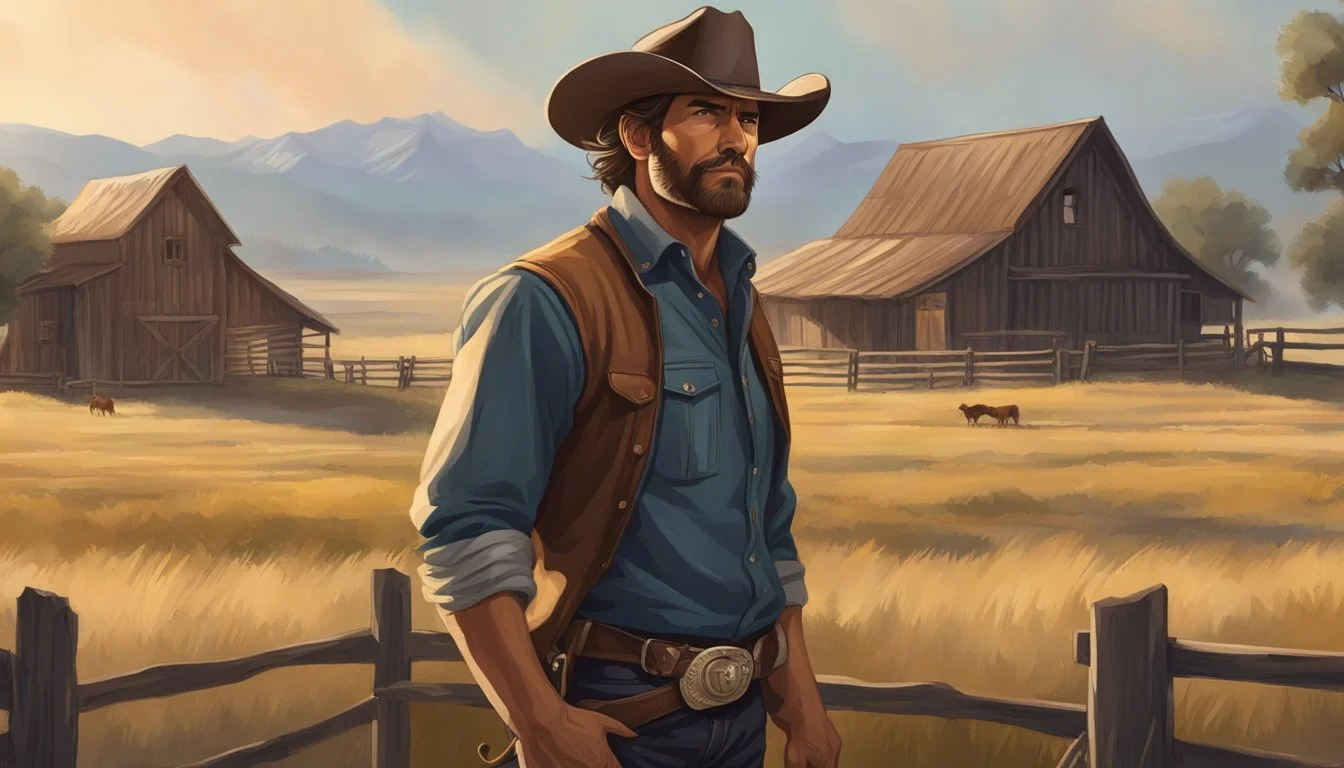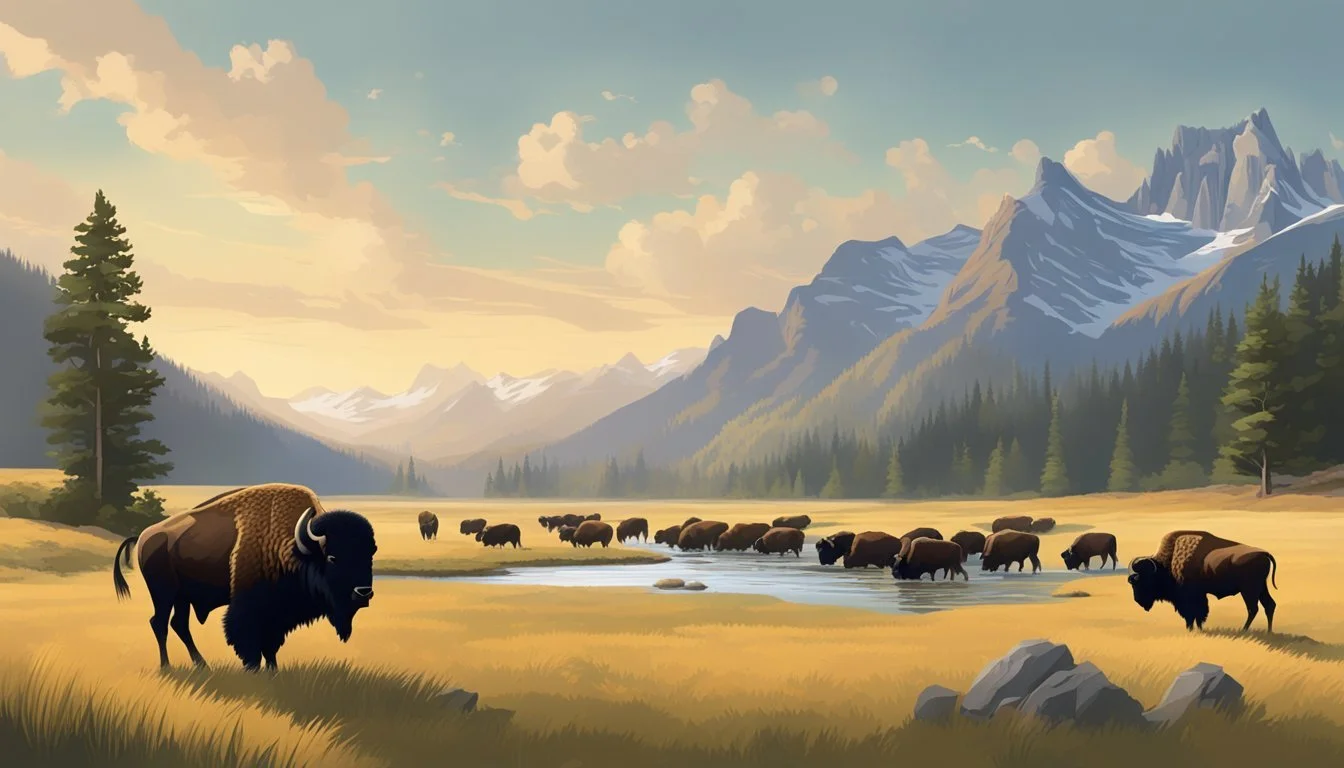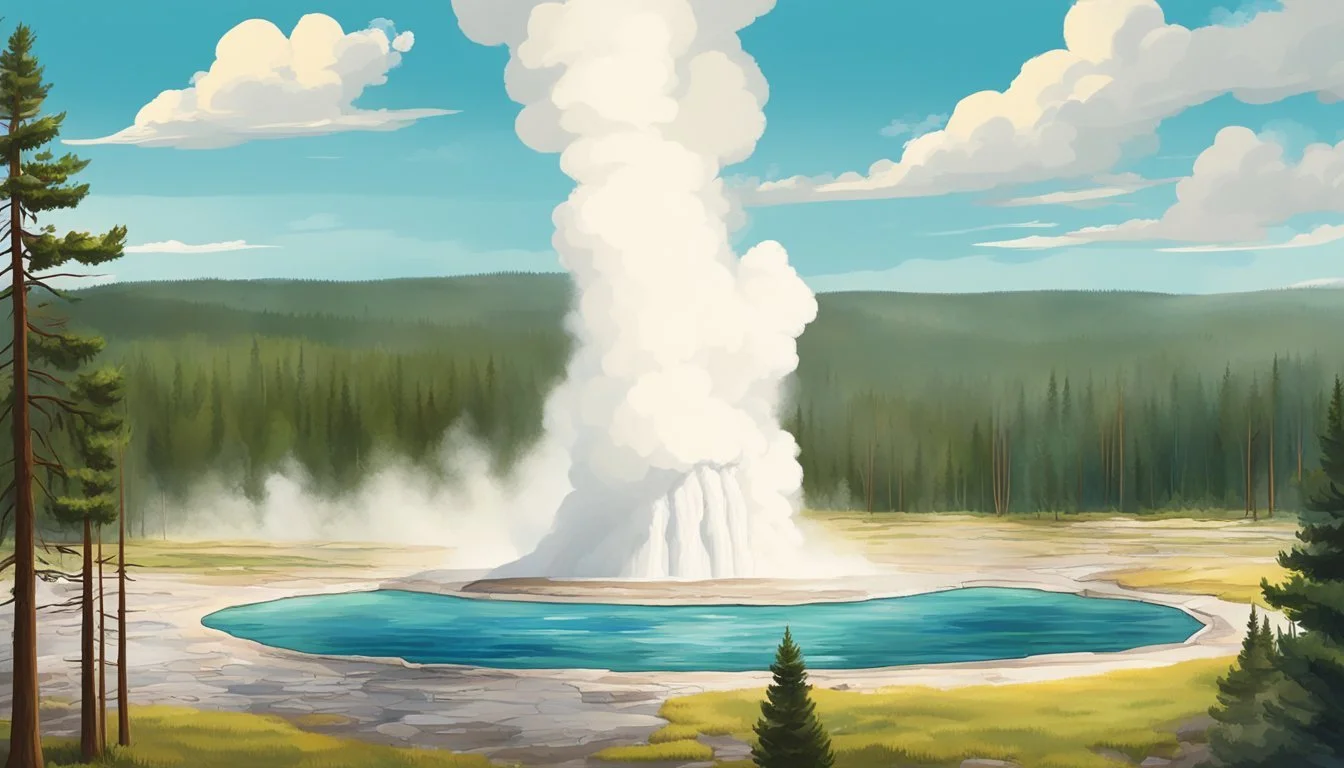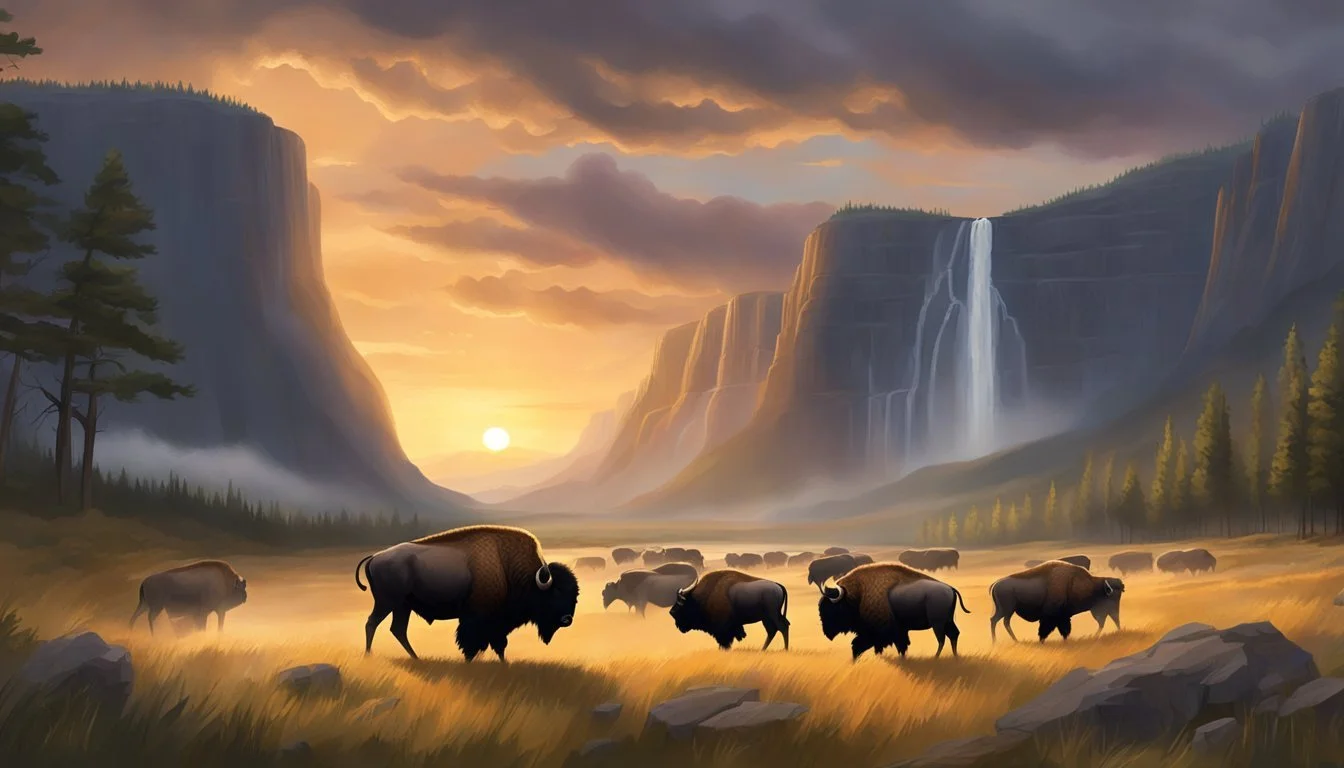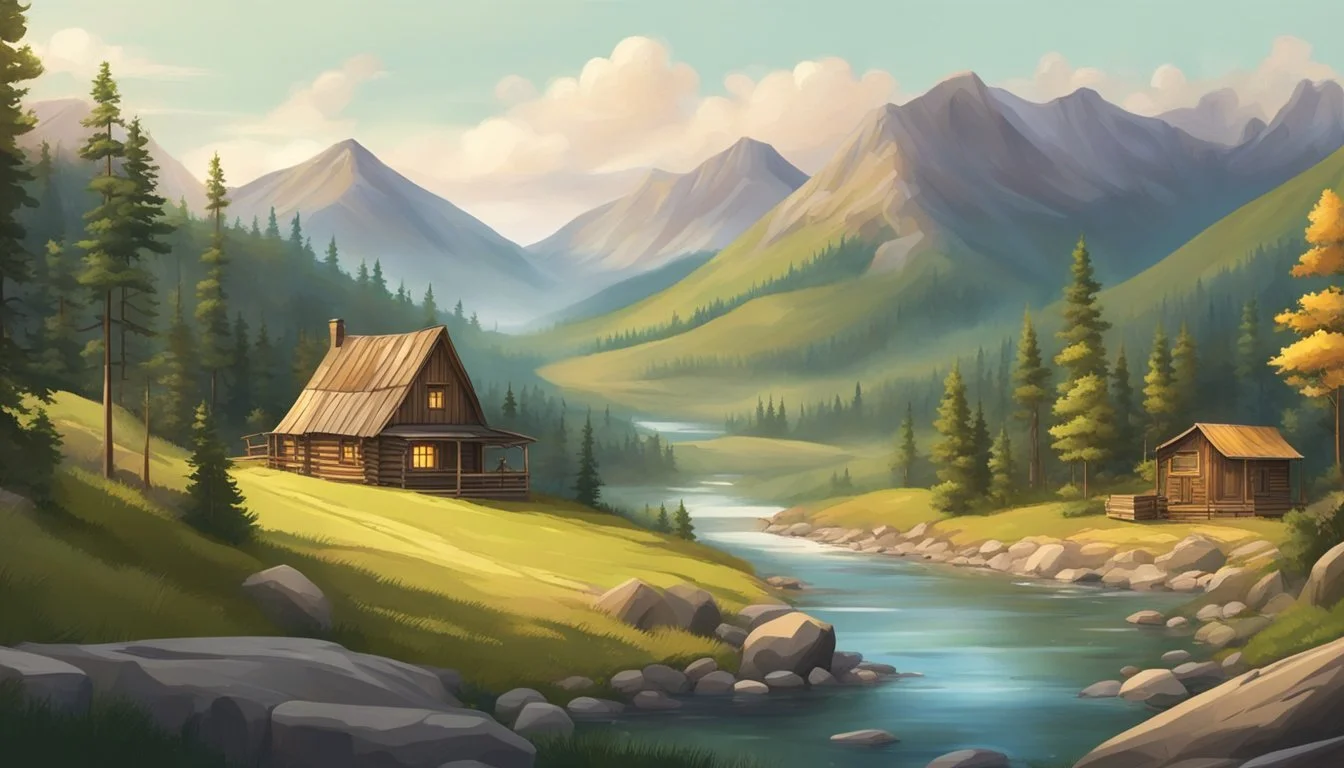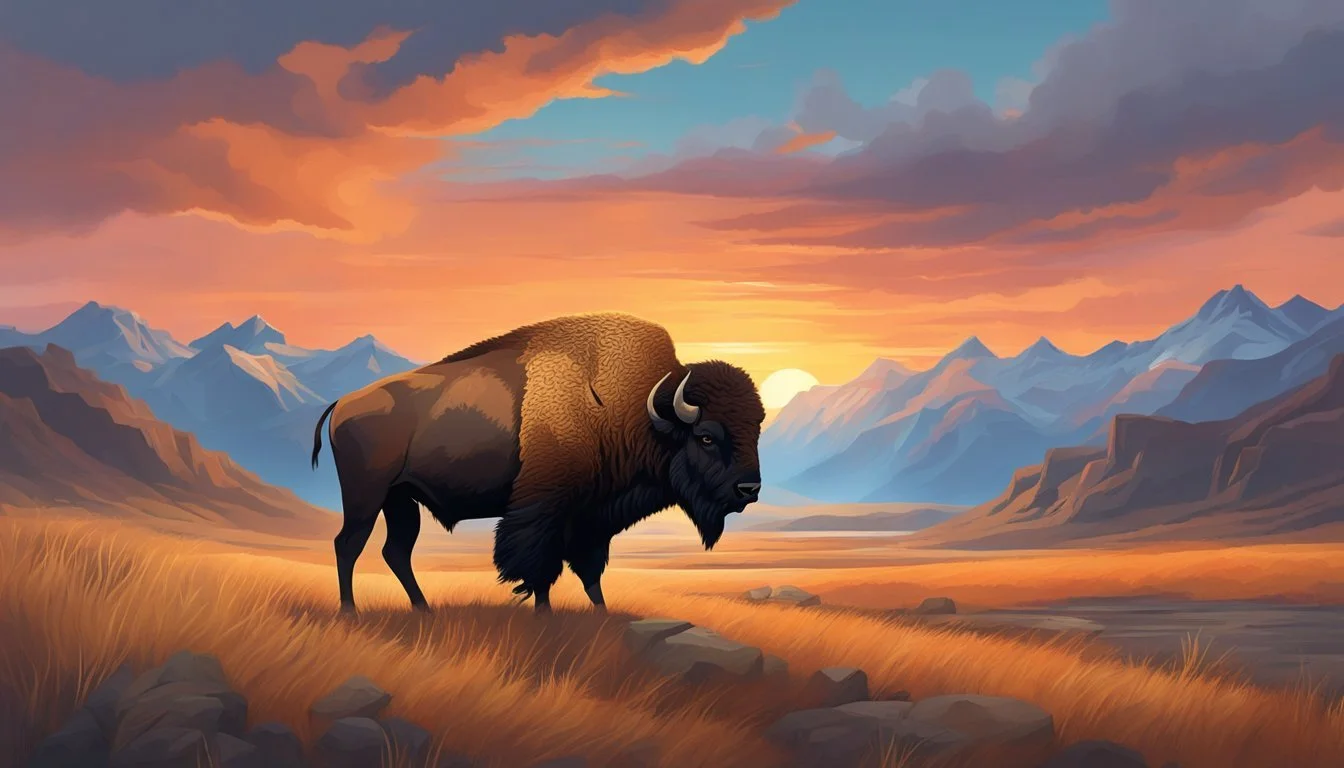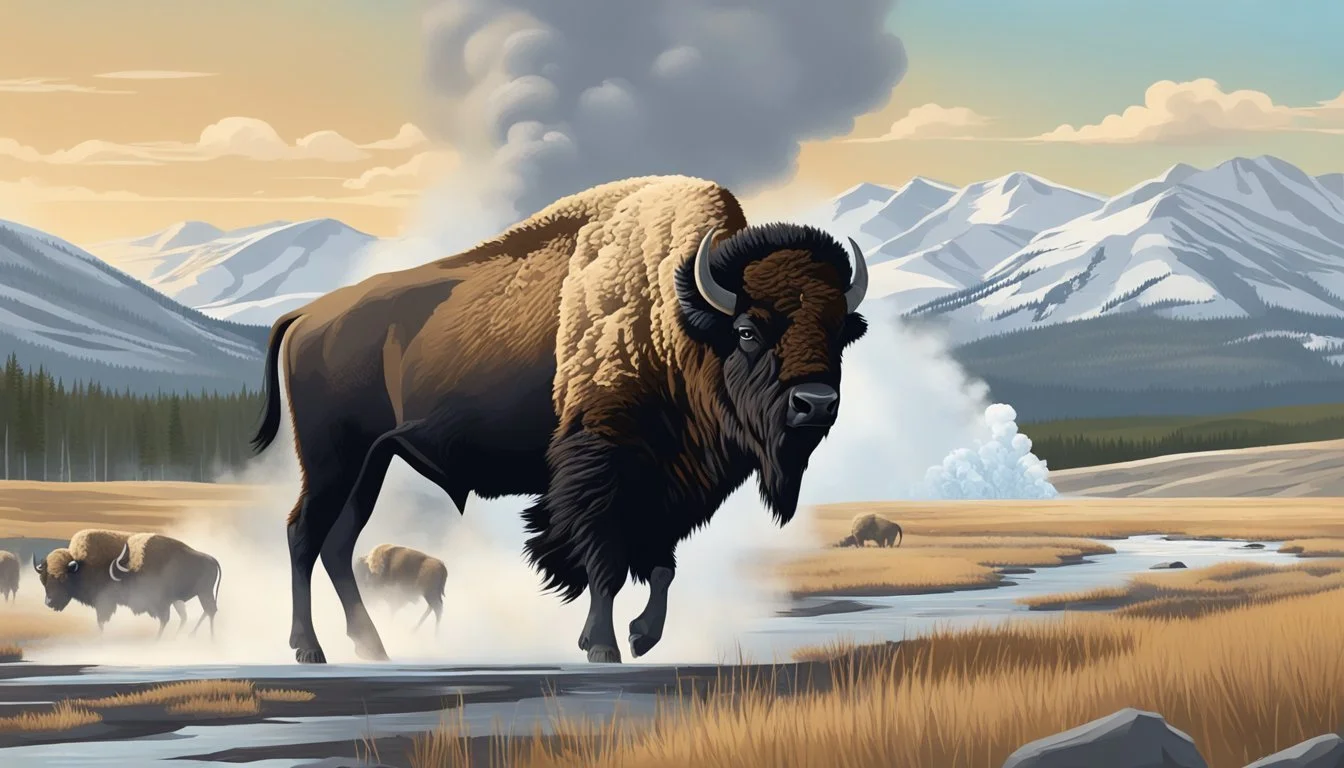Dive Deeper: Other Yellowstone Series Uncover Hidden Gems of the Dutton Legacy!
Yellowstone has captivated audiences with its gritty portrayal of the Dutton family's fight to preserve their Montana ranch. Creator Taylor Sheridan has expanded this world through several spinoff series, each offering a unique glimpse into different eras of the Dutton legacy.
The Yellowstone universe now includes prequels like 1883 and 1923, which explore the family's history in the American West. These shows delve into the challenges faced by earlier generations of Duttons as they established their ranching empire in Montana.
Paramount has also announced upcoming spinoffs set in various time periods. These include 1944 and a series tentatively titled 2024 or The Madison, which will follow new characters in present-day Montana. While details are still emerging, these additions promise to further enrich the compelling world Sheridan has created around the iconic Yellowstone ranch.
Genesis of the Yellowstone Universe
Taylor Sheridan's Yellowstone series sparked a sprawling franchise set in the rugged landscape of Montana. The show's success led to multiple spinoffs exploring different eras of the Dutton family saga.
Origins and Creator
Taylor Sheridan, a former actor turned writer-director, created Yellowstone in 2018. The series quickly gained popularity for its gritty portrayal of modern ranch life.
Sheridan drew inspiration from his Texas upbringing and experiences on ranches. His vision blended classic Western themes with contemporary issues facing rural America.
The show's setting in Montana's Paradise Valley provided a stunning backdrop. Sheridan chose this location for its natural beauty and rich ranching history.
Evolution of the Dutton Family Saga
Yellowstone's success paved the way for an expanded universe. Prequels like 1883 and 1923 explored the Dutton family's past.
1883 depicted the family's arduous journey westward. It starred real-life couple Tim McGraw and Faith Hill as James and Margaret Dutton.
1923 jumped forward in time, featuring Harrison Ford and Helen Mirren as an older generation of Duttons. This series highlighted the challenges of Prohibition and the Great Depression.
Cinematic Craftsmanship and Setting
Sheridan's commitment to authenticity shaped the Yellowstone universe. He insisted on filming on location in Montana and Utah.
The shows employ real cowboys as extras and advisors. This attention to detail lends credibility to the ranch scenes and horseback riding sequences.
Cinematography plays a crucial role, capturing the vast landscapes and rugged terrain. The visuals reinforce themes of man versus nature and the struggle to preserve a way of life.
The Prolific Dutton Family
The Dutton family saga spans generations, weaving a complex tapestry of ambition, loyalty, and struggle across the American West. Their story unfolds through multiple eras, showcasing the evolution of characters and the enduring legacy they've built.
Historical Context and Eras
The Dutton family's journey begins in the late 19th century with James Dutton, portrayed by Tim McGraw in "1883". As a Civil War veteran from Tennessee, James led his family westward in search of a new life. Their arduous trek culminated in Montana, where they established the foundation of the Yellowstone Dutton Ranch.
The narrative continues in "1923", set during the challenges of Prohibition and the Great Depression. This era introduces Jacob Dutton, expanding on the family's roots and their fight to maintain their hold on the land.
"Yellowstone" brings the story to modern times, centering on John Dutton III and his children as they navigate contemporary challenges to their ranch and way of life.
Character Profiles and Development
John Dutton III, played by Kevin Costner, stands as the current patriarch in "Yellowstone". His unwavering commitment to preserving the family legacy drives much of the series' conflict.
Beth Dutton, John's daughter, emerges as a fierce and complex character. Her sharp business acumen and loyalty to family make her a formidable ally and opponent.
Rip Wheeler, though not a Dutton by blood, becomes an integral part of the family through his devotion to the ranch and his relationship with Beth.
Each generation of Duttons faces unique challenges, shaping their characters and influencing their decisions as they fight to protect their land and legacy.
Family Dynamics and Legacy
The Dutton Family Tree reveals a lineage marked by determination and sacrifice. From James and Margaret Dutton's initial settlement to John Dutton III's modern-day struggles, each generation has fought to maintain their grip on the Yellowstone Dutton Ranch.
Family relationships are often strained, with loyalty to the ranch sometimes overshadowing personal bonds. The series explores the complex dynamics between siblings, parents, and children as they grapple with external threats and internal conflicts.
The Dutton legacy is not just about land ownership; it's about preserving a way of life and the values that have defined their family for generations. This legacy shapes the actions and motivations of each family member, driving the narrative across all Yellowstone series.
The Extended Yellowstone Series
The Yellowstone universe has expanded beyond the original series with prequels and spinoffs. These additional shows explore different time periods and branches of the Dutton family tree, enriching the overall saga.
The Prequels: 1883 and 1923
"1883" takes viewers back to the Dutton family's origins. It follows James and Margaret Dutton as they embark on a perilous journey westward. The series showcases the harsh realities of 19th-century frontier life.
"1923" jumps forward to the early 20th century. It features a new generation of Duttons facing challenges like Prohibition, drought, and the looming Great Depression. The show stars Harrison Ford and Helen Mirren as Jacob and Cara Dutton.
Both prequels provide crucial backstory to the modern Yellowstone ranch. They highlight the family's enduring determination and the sacrifices made to establish their legacy.
The Future and Beyond: 1944 and 6666
"1944" is set to continue the Dutton saga during World War II. While details are limited, it promises to explore how global events impact the family and their Montana ranch.
"6666" shifts focus to the legendary Four Sixes Ranch in Texas. This spinoff will delve into the operations of a different historic ranch, expanding the Yellowstone universe beyond Montana's borders.
These new series aim to broaden the scope of Taylor Sheridan's neo-Western drama. They offer fresh perspectives on ranching life across different eras and locations.
Interconnected Storylines and Characters
The Yellowstone spinoffs are designed to interweave with the main series. Characters from different time periods often connect through family ties or shared locations.
Flashbacks and references in the original show gain new meaning as prequels flesh out past events. This interconnectedness rewards loyal viewers with a rich, multi-generational narrative.
Taylor Sheridan's careful planning ensures each series contributes to a cohesive universe. Themes of family, land ownership, and the changing American West echo throughout all shows, creating a unified storytelling experience.
Cultural and Historical References
The Yellowstone franchise weaves rich cultural and historical tapestries into its storytelling. These series draw upon pivotal moments and enduring themes from America's past to create compelling narratives.
Depictions of the Great Depression and Prohibition
The Great Depression features prominently in some Yellowstone prequels. Characters struggle with economic hardship, unemployment, and food scarcity. Dustbowl imagery and migrant workers underscore the era's challenges.
Prohibition's impact is explored through bootlegging operations and speakeasies. The clash between lawmen and moonshiners highlights the period's moral complexities.
Rural communities adapt to changing times, with traditional ways of life threatened by modernization and industrialization.
The Impact of World War I and II
World War I's aftermath shapes characters' backstories and motivations. Veterans grapple with physical and psychological scars from the conflict.
World War II's looming shadow influences storylines set in the late 1930s and early 1940s. Characters debate America's role in global affairs.
The wars' effects on the home front are portrayed through rationing, women entering the workforce, and changing social norms.
Western Archetypes and Authenticity
Cowboys and ranchers embody classic Western ideals of rugged individualism and self-reliance. The series examines these archetypes' relevance in changing times.
Native American characters offer perspectives that challenge traditional Western narratives. Their stories highlight cultural preservation and land rights issues.
Authentic period details in costumes, sets, and dialogue immerse viewers in each era. Historical figures occasionally appear, grounding fictional plots in real events.
The tension between progress and tradition is a recurring theme, as characters navigate societal shifts while striving to maintain their ways of life.
Critical Acclaim and Audience Reception
Yellowstone and its spinoff series have garnered significant praise from critics and viewers alike. The shows have amassed numerous awards, achieved impressive ratings, and cultivated a devoted fanbase.
Awards and Nominations
Yellowstone has received multiple accolades since its debut. The series earned Emmy nominations for Outstanding Production Design and Outstanding Cinematography. Lead actor Kevin Costner won a Golden Globe for Best Actor in a Television Series - Drama in 2023. The show has also been recognized by the Screen Actors Guild Awards and the Producers Guild of America Awards.
Supporting cast members like Kelly Reilly and Cole Hauser have received critical praise for their performances. The series' writing and direction have been lauded for their authenticity and compelling storytelling.
Viewership and Ratings
Yellowstone's audience has grown significantly since its premiere on Paramount Network in 2018. The series debut attracted 2.8 million viewers. By Season 5, the show's popularity had skyrocketed, with the premiere drawing an impressive 8.8 million viewers in November 2022.
The show's success extended to its CBS broadcast, which reached a massive audience. This expansion to network television introduced Yellowstone to new viewers and solidified its status as a ratings powerhouse.
Paramount+ has benefited from the franchise's popularity, with spinoff series like 1883 and 1923 driving subscriptions and engagement on the streaming platform.
Cultural Impact and Fandom
Yellowstone has sparked discussions about modern American life and values. The series has influenced fashion trends, with viewers emulating the characters' Western-inspired style.
Fan engagement is evident through social media discussions, merchandise sales, and tourism to filming locations. The show's portrayal of ranching life has resonated with rural audiences while also attracting urban viewers.
Yellowstone's success has led to a resurgence of interest in Western-themed entertainment. The franchise has expanded beyond television, inspiring books, podcasts, and themed experiences that allow fans to immerse themselves in the Yellowstone universe.
Creative Forces and Performances
Taylor Sheridan's creative vision and talented ensemble cast bring the Yellowstone universe to life. Guest stars add depth and intrigue to the expansive world of ranching and family drama.
Taylor Sheridan's Vision
Taylor Sheridan serves as the creative force behind the Yellowstone series and its spinoffs. His unique storytelling approach blends Western themes with modern conflicts. Sheridan's writing style emphasizes complex characters and gritty realism.
He draws inspiration from his own experiences growing up on a Texas ranch. This authenticity shines through in the show's portrayal of ranch life and family dynamics.
Sheridan's involvement extends beyond writing. He often directs key episodes, ensuring his vision translates seamlessly to the screen.
The Ensemble Cast
Yellowstone boasts a stellar ensemble cast led by Kevin Costner as John Dutton. Costner's portrayal of the tough patriarch anchors the series. Kelly Reilly brings fierce intensity to Beth Dutton, John's daughter and fiercest ally.
Wes Bentley plays Jamie Dutton with nuanced complexity. His character's inner turmoil adds layers to the family drama.
The cast's chemistry brings the Dutton family dynamics to life. Their performances capture the loyalty, conflicts, and power struggles at the heart of the show.
Guest Stars and Cameos
Yellowstone's spinoffs feature high-profile guest stars that elevate the storytelling. Harrison Ford and Helen Mirren lead the cast of 1923, bringing gravitas to their roles as an earlier generation of Duttons.
Tim McGraw and Faith Hill starred in 1883, showcasing their acting chops alongside their country music fame. Their performances added emotional depth to the pioneer-era prequel.
Matthew McConaughey is rumored to be involved in a future Yellowstone project. His potential addition to the franchise has generated significant buzz among fans.
These guest appearances attract new viewers while rewarding longtime fans with fresh perspectives on the Dutton saga.
Production Insights and Filming Locations
The breathtaking scenery and authentic Western atmosphere are hallmarks of the Yellowstone series. The production team utilizes real locations and meticulous set design to bring the world of the Dutton family to life.
Montana's Vast Landscape
Montana serves as the primary filming location for Yellowstone. The show's production moved to the state for season 4, capitalizing on its stunning natural beauty. The Chief Joseph Ranch near the Bitterroot Valley doubles as the iconic Yellowstone Dutton Ranch. This working guest ranch provides an authentic backdrop for many key scenes.
Trapper Peak forms a majestic horizon, adding to the visual splendor. The Madison River Valley and surrounding Great Plains also feature prominently, showcasing Montana's diverse terrain. These locations offer viewers a genuine glimpse into the rugged landscape of the American West.
Set Design and Period Authenticity
The production team pays meticulous attention to detail in recreating the atmosphere of a modern working ranch. Period-appropriate furnishings, equipment, and decor are carefully selected to maintain authenticity. The set designers blend contemporary elements with traditional Western aesthetics to reflect the Dutton family's long history on the land.
Costume design plays a crucial role in establishing character identities and the show's overall visual style. From cowboy hats and boots to tailored suits, each outfit is chosen to reflect the characters' roles and personalities within the ranch hierarchy.
Behind-the-Scenes Anecdotes
Filming in remote locations presents unique challenges for the cast and crew. Unpredictable weather conditions often require quick adaptations to shooting schedules. The production team works closely with local communities to ensure minimal disruption during filming.
Many cast members have developed genuine horsemanship skills through their work on the show. This dedication to authenticity enhances the realism of riding scenes. The Four Sixes Ranch in Texas has also been featured, expanding the show's geographic scope and storyline possibilities.
Directors often utilize natural lighting to capture the changing moods of the landscape throughout the seasons. This approach adds depth and richness to the visual storytelling, making the environment itself a character in the series.
Themes and Societal Commentary
Yellowstone delves into complex societal issues through its narrative and characters. The series tackles land ownership, family legacy, and the preservation of rural American culture.
Land Ownership and Stewardship
The Dutton family's struggle to maintain control of their vast ranch is central to Yellowstone's commentary on land ownership. This conflict reflects real-world tensions between preservation and development in rural America.
The show explores the responsibilities and challenges of land stewardship. It highlights the Duttons' deep connection to their ancestral lands and their determination to protect it from encroaching interests.
Thomas Rainwater's character adds another layer to this theme. His efforts to reclaim land for his tribe showcase the complex history of land ownership in the American West.
Conflict and Human Connection
Yellowstone portrays the intricate web of relationships in a small, rural community. The series examines how conflicts over land and resources affect personal connections.
Family loyalty is a key theme, with the Duttons often prioritizing their legacy over individual desires. This loyalty is tested by external threats and internal disagreements.
The show also explores unlikely alliances formed in the face of common enemies. These connections highlight the complexity of human relationships in high-stakes situations.
Grief and Healing
Grief plays a significant role in shaping characters' motivations and actions. The series depicts how loss impacts individuals and families, often driving them to extreme measures.
Characters grapple with personal tragedies, from the death of loved ones to the loss of their way of life. Yellowstone shows how these experiences can either unite or divide people.
The healing process is portrayed as a difficult journey, often intertwined with themes of revenge and forgiveness. This adds depth to the characters and drives much of the series' emotional impact.
Influence on Modern Television
Yellowstone has shaped the landscape of contemporary TV dramas, reviving interest in Western-themed content and sparking new trends in storytelling and production. Its success has reverberated across networks and streaming platforms, leading to a surge in related programming.
Genre Revitalization and Trends
Yellowstone breathed new life into the Western genre, modernizing it for today's audiences. The show blends traditional Western elements with contemporary issues, creating a unique neo-Western style.
This approach has inspired other series to follow suit, incorporating rural American settings and themes into their narratives. The show's popularity has led to increased interest in stories about ranching, land disputes, and family dynasties in the modern West.
Yellowstone's gritty realism and complex characters have set a new standard for drama series, influencing the tone and style of subsequent productions.
Influence on Streaming Services
The success of Yellowstone has had a significant impact on streaming platforms. Initially airing on the Paramount Network, the show's popularity led to its availability on Paramount+.
This move demonstrated the power of original content to drive subscriptions and viewer engagement. Other streaming services took note, investing in similar high-quality, character-driven dramas to attract and retain subscribers.
Peacock secured streaming rights for Yellowstone, further highlighting the show's value in the competitive streaming market. This cross-platform availability has become a model for maximizing a show's reach and profitability.
Expanding the Universe through Spinoffs
Yellowstone's success has spawned a series of spinoffs, creating a vast interconnected universe. These include:
"1883": A prequel exploring the Dutton family's history
"1923": Another prequel set in the early 20th century
"6666": A series focused on the historic 6666 Ranch in Texas
These spinoffs have extended the Yellowstone brand, attracting both existing fans and new viewers. They've also provided opportunities for exploring different time periods and settings within the same thematic framework.
The expansion strategy has influenced other networks and streaming services to develop their own interconnected series universes, recognizing the potential for long-term audience engagement and cross-promotion.

